Blog
Moiré silk
This is an effect created during the finishing of the silk material called Calendering. This involves folding the silk material and passing it under rollers at high temperatures and pressures. The result is an attractive wavy, watermarked patterning to the silk. READ MORE
Velvet Ruching
Ruching is originally a French term meaning to gather, ruffle or pleat. Most often seen in the lids of jewellery boxes and dressing cases, ruching is a technique by which velvet or silk is gathered up to form patterns of ruffles. These ruched panels are often softly padded and can be used to hold decorative pins and brooches. This particular technique was used throughout most of the 19th century.
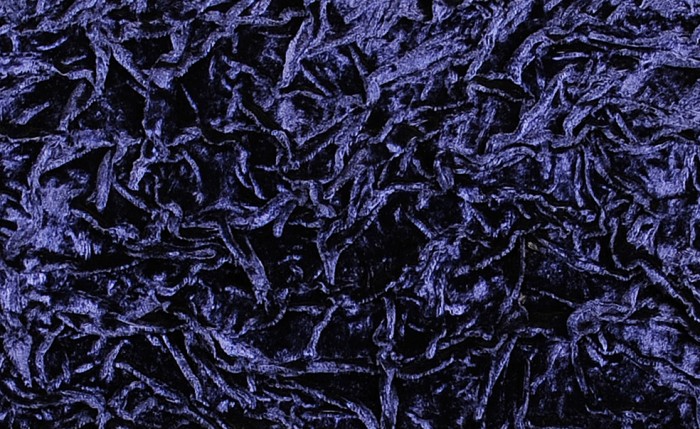
Velvet ruching in the lid of an Asprey antique jewellery box.
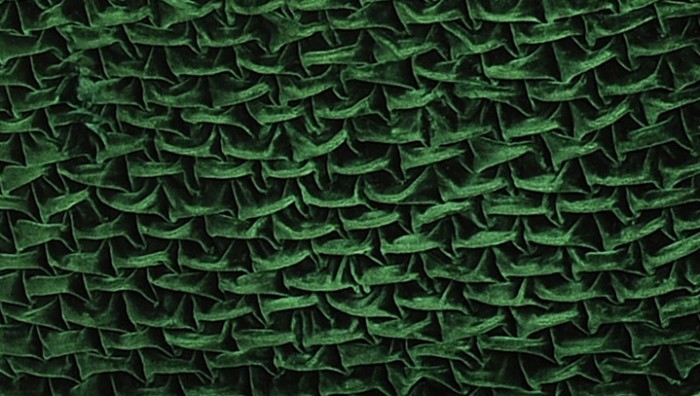
Velvet ruching taken from a Howell, James & Co. antique jewellery box.
Spring-Loaded Mechanisms
The spring-loaded action is where an object or mechanism is held tightly against a spring, but is initially ‘locked’ into position. Once ‘unlocked’, the object or mechanism is propelled out by the natural action of the spring. READ MORE
Exterior and Interior Design
With most earlier box makers often keeping to more conventional box opening designs, the Victorian makers started to think more creatively regarding this. With style, practicality, space maximization and indeed status in mind, these Victorian box makers began to make significant changes to the more standard box form that most people had been accustomed to for millenniums. READ MORE
Chasing and Repoussé
Chasing is the technique of hammering a malleable metal in order to create or define an embossed design. Chasing involves hammering from the front face of the metal, inwards and is used in conjunction with the opposite technique, Repoussé, which involves hammering from the underside side of the metal, outwards. READ MORE
Engine Turning / Guilloché
Engine turning (or Guilloché) is a method of machine engraving precise, repeat straight line or geometrical patterns and designs onto a base metal – a process that has been used in metalwork since the late 18th century. READ MORE
Cross-Banding
Cross-banding is the process of creating a border of veneer with its grain running at right angles to the grain of the adjoining veneer. READ MORE
History of Dressing Cases
Towards the end of the 18th century, dressing cases were manufactured specifically to accompany upper class gentleman during travel. Dressing cases were originally rather utilitarian but they spoke volumes about their owners’ wealth and place in society, as at that time, travelling was only undertaken by the elite. READ MORE
Asprey Patent Bramah Lock
Asprey Patent locks were essentially Bramah locks that had been customised using Asprey’s own patented design. A normal box lock would simply be left in the unlocked position unless it was manually locked with a key. This meant that a forgetful, or over-trusting owner could easily leave the box unprotected and vulnerable. To try and combat this issue, some Bramah locks were modified by using a spring-loaded self-locking mechanism that automatically locks the box when the lid is closed. READ MORE
Chubb
The Chubb lock company was founded in 1818 by brothers, Charles and Jeremiah Chubb, at their premises on Temple Street, Wolverhampton. This was enabled by Jeremiah’s invention of the ‘Detector’ lock, winning him 100 Guineas in a government competition to create an un-pickable lock that could only be opened by its own key. READ MORE
Toulmin & Gale
The Toulmin & Gale company were originally established in 1735. By 1845, Joseph Toulmin and John Gale were in control of the company, based at 85-86 Cheapside, London. READ MORE
Howell, James & Co
The partnership of Howell and James was founded in 1819 by James Howell and Isaac James. Originally silk merchants and retail jewellers, they were based at 5, 7 and 9 Regent Street, London. READ MORE
Jenner & Knewstub
Established around 1856 by Frederick Jenner and Fabian James Knewstub, they were located at 33 St James’s Street, and then later in 1862, at 66 Jermyn Street, London. READ MORE
Hancock
Having been a partner in the company of Hunt & Roskell, Charles Frederick Hancock established his own business in 1849, based at 39 Bruton Street, London. By 1862 he had expanded to 38 Bruton Street and 152 New Bond Street, London. READ MORE
Silver Hallmarks
Originally introduced in 1300 by a statute of Edward l, this is an official identifying mark or set of marks stamped into a precious metal. The purpose of these hallmarks has always been to protect the customer from fraud and to protect the seller against unfair competition. READ MORE
Brass Handles
Whether it was country to country, city to city or just room to room, some of these boxes, often being heavy, needed to be carried easily and safely during travel. Taking influence from the campaign furniture of the time, makers would fit brass side or top handles to these boxes. READ MORE
Silver Plating (19th Century)
Silver plating is the method by which a base metal is coated with silver. This process is known as Electroplating and was first pioneered by Boris Jackobi, a German mathematician, in 1835. By 1840, the Birmingham based Elkington Company, run by George Richards Elkington and his cousin Henry Elkington, took out the patent for the improved process of electroplating silver, having discovered this in collaboration with surgeon, John Wright. READ MORE
Gilding
Gilding is the process of coating a metal with a thin layer of a pure gold. To perform this task during the 19th century, a process called fire-gilding or mercury gilding was used. READ MORE
Engraving
Engraving is is the art of inscribing forms of design, decoration, symbols and lettering into a hard surface by hand.
The engraver begins the process by drawing or stenciling the design onto the object. The design is then traced, lightly etching it using a point tool. A variety of hand gravers or burins are then used to properly engrave the traced design. READ MORE
Crowns and Coronets
Crowns are a symbol of monarchy, representing Kings and Queens, Princes and Princesses, and Dukes and Duchesses. A Coronet is another type of crown, but is reserved for the lower ranks of nobility like Marquesses and Marchionesses, Earls and Countesses, Barons and Baronesses, and some Lords and Ladys.
The specific design and attributes of the crown or coronet signifies the hierarchy and ranking of its owner. Denotations of ‘strawberry leaves’ and ‘pearls’ are used in differentiating the ranks of the Peerage.
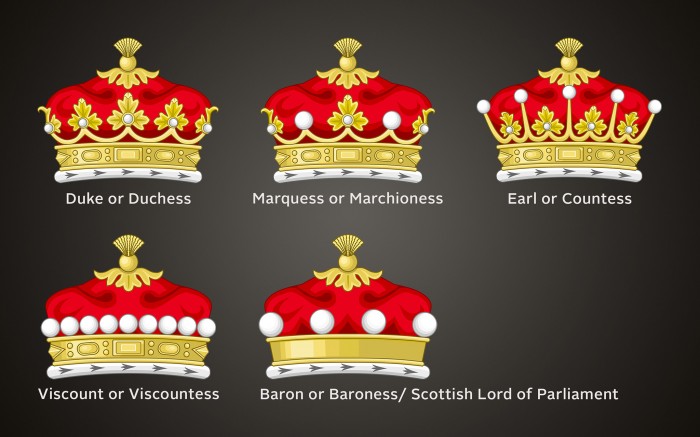
British crown and coronet nobility rankings in hierarchical order.
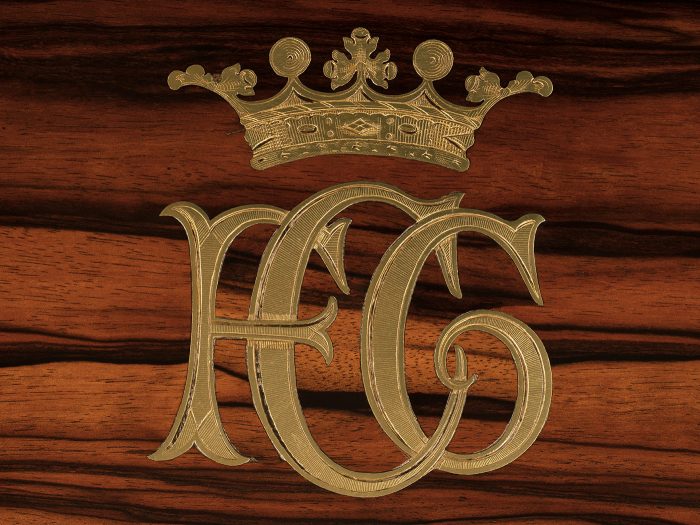
A marquess or marchioness’ coronet.
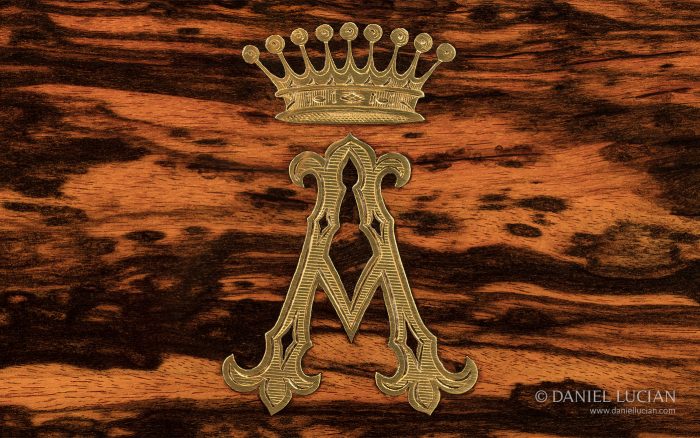
A viscountess’ coronet above an ‘M.A’ monogram belonging to Viscountess Marian Alford.
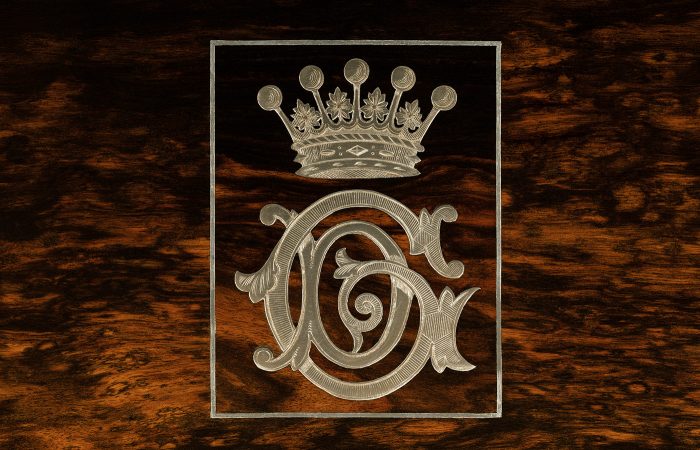
An earl or countess’ coronet.
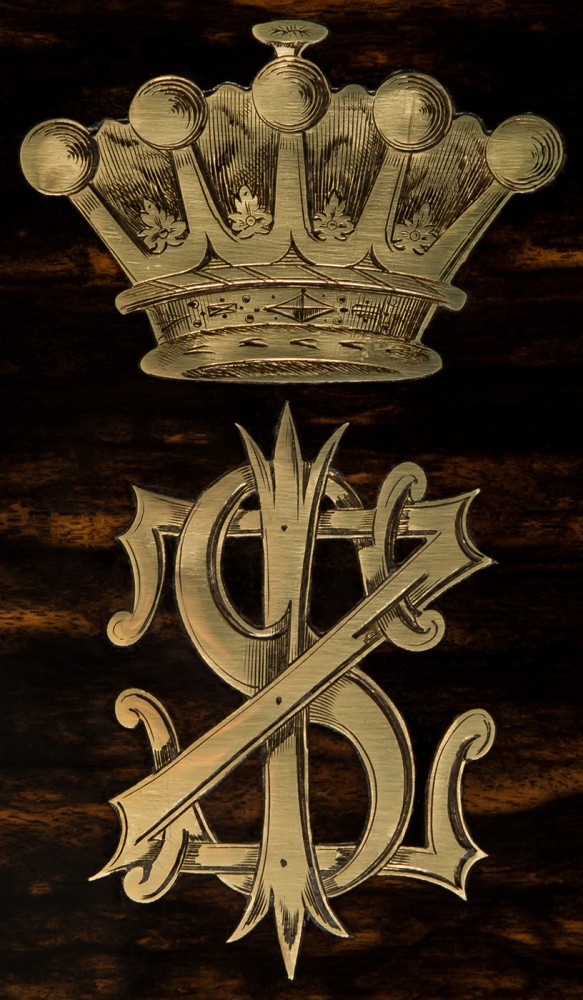
An earl or countess’ coronet.
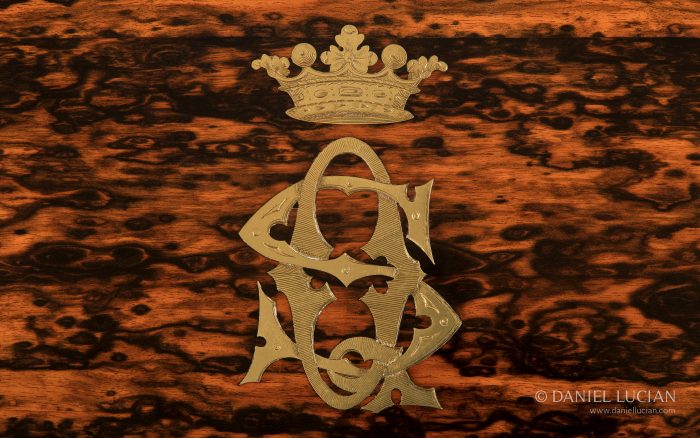
A marchioness’ coronet above an ‘S.Q’ monogram belonging to the Marchioness of Queensberry.
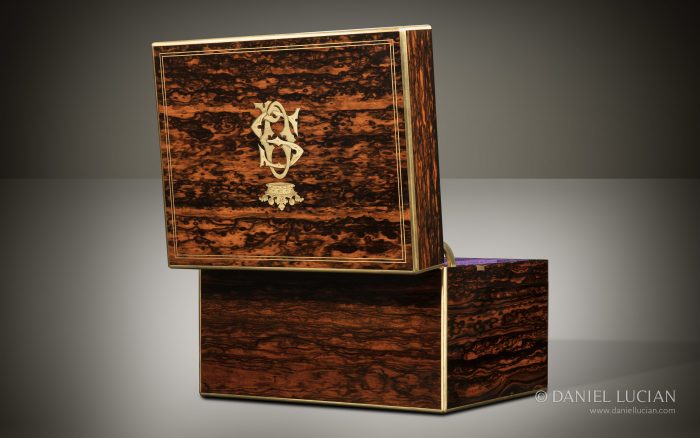
Antique Jewellery Box in Coromandel, Retailed by C.F. Hancock – A Wedding Present from the Marquess of Queensberry to the Marchioness of Queensberry.
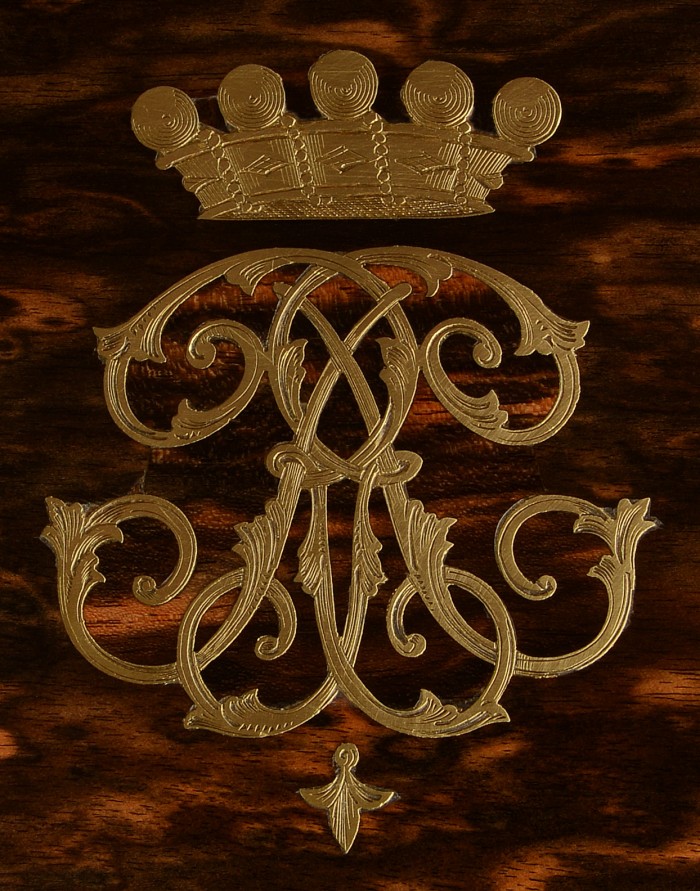
Coronet and monogram belonging to Baroness Rothschild.
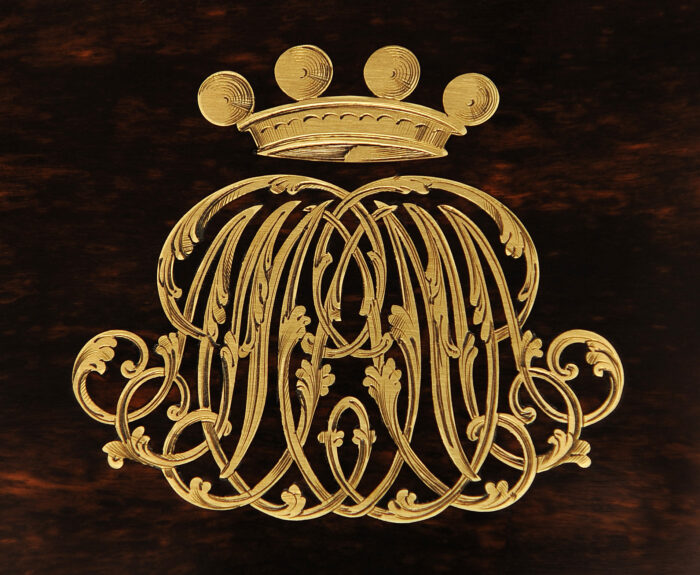
A baron or baroness’ coronet.
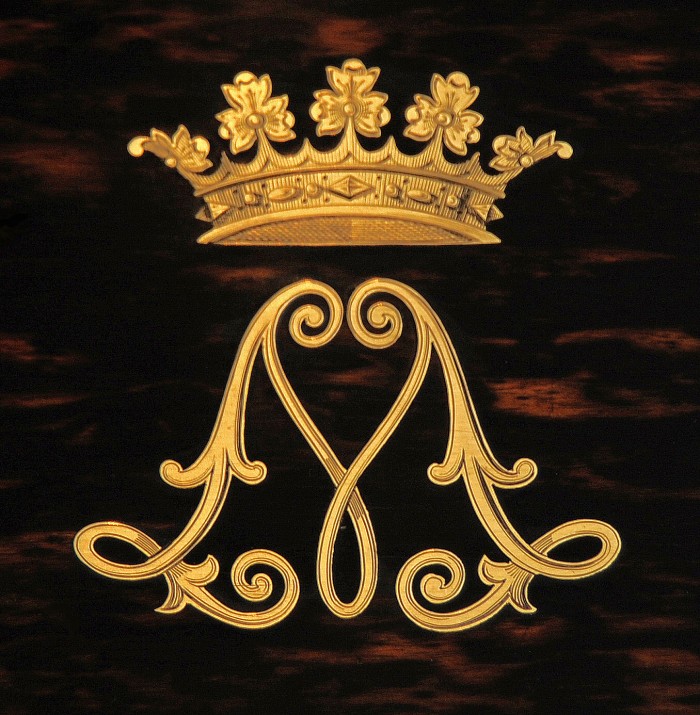
A duke or duchess’ crown.
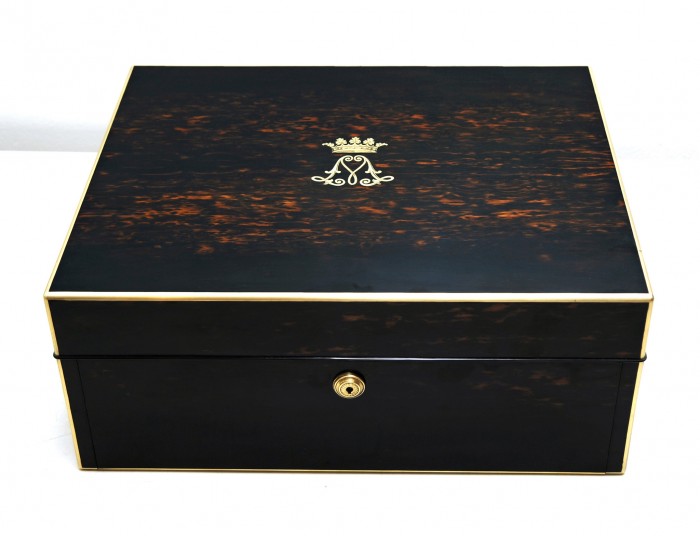
Asprey coromandel box with an inlaid duke or duchess’ crown.
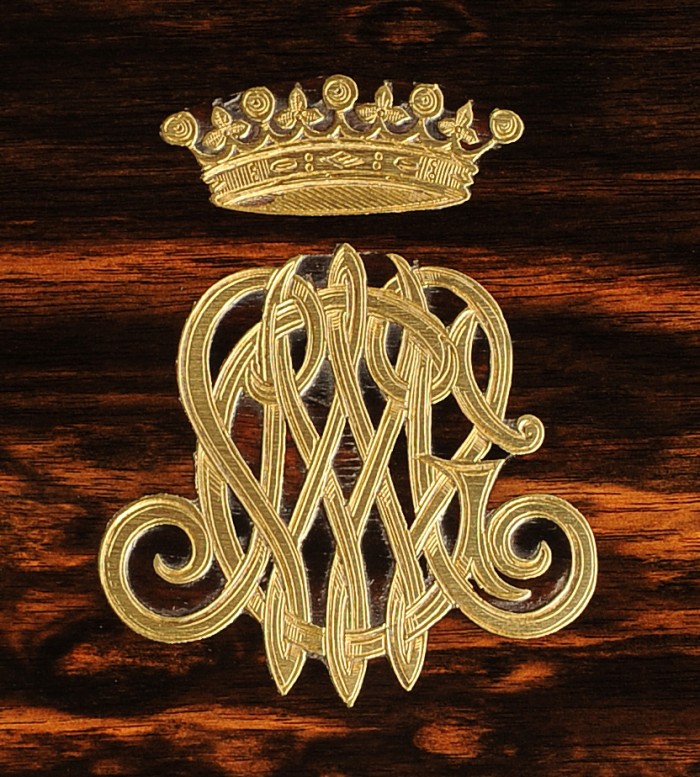
Coronet belonging to Mary Constance Wyndham, Countess of Wemyss.
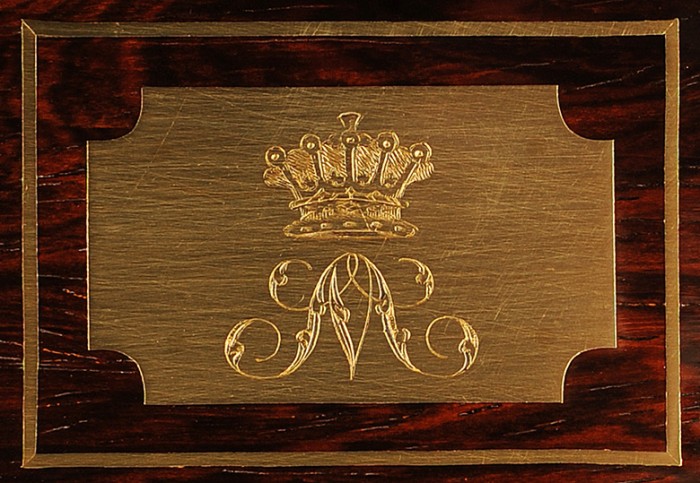
An earl or countess’ coronet.
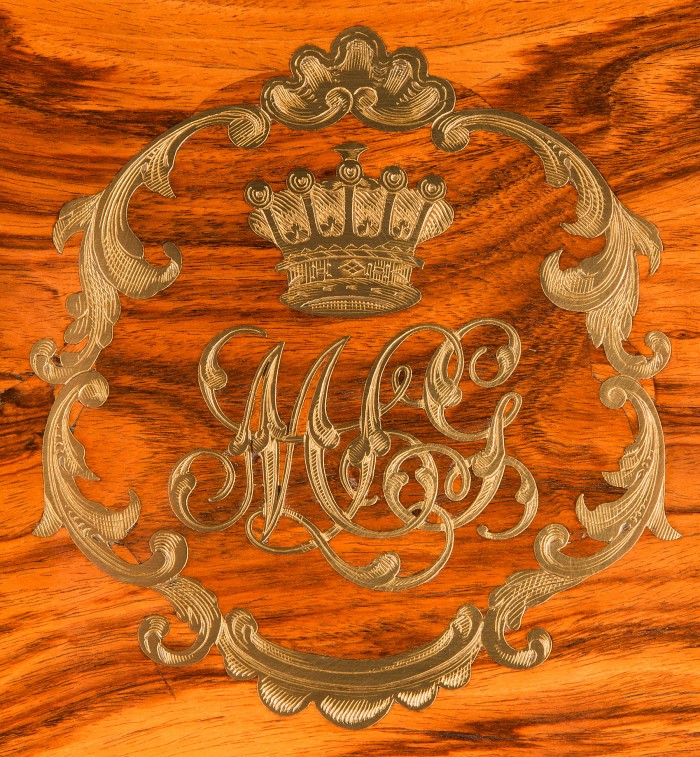
An earl or countess’ coronet.
Escutcheons
Escutcheons are usually shaped plates, often made from brass, that can either surround a keyhole or be inlaid into the top of the lid. READ MORE
Brass Hinges
Brass hinges were used to connect the lid to the main part of the box. There were countless styles of brass hinge, and the type chosen by the box maker would reflect practicality and design. READ MORE
Brass Inlay
During the Regency period it was very much the height of opulence to inlay delicately shaped pieces of brass design into wood.
Inspired from the French Napoleonic style, this art form was only attained by the most skilled and patient craftsman. READ MORE
Brass Corner Mounts
These were often sculpted right angle shaped pieces of brass that were inlaid into the corners of the interior rims of the box. Originally used to reinforce the corner joints, these corner mounts became more of a decorative detailing feature rather than serving a practical purpose. READ MORE
Brass Stringing
Thin strands of squared brass stringing were sometimes inlaid into the wood, often running parallel with the exterior perimeter brass edging or inlaid into the interior rims of the box. This was purely as a form of additional decoration. READ MORE
Brass Edging and Binding
The use of brass to edge the perimeter of a box seems to date back to around the start of George IV’s reign in 1820. As well as to protect, strengthen and conceal the joints, the brass was also considered as an additional decoration to the box’s exterior. READ MORE
Dovetail Joints
The method of dovetail joinery goes all the way back to ancient Egypt, where furniture displaying this practice has been found alongside entombed mummies.
Most often used to join separate sides together, the dovetail joint consists of a series of pins that extend from the end of one side and interlock with a series of tails on another side. READ MORE
French Polishing
French polishing is a process that was adopted and refined by the French in the 18th century, and is used to finish wood with a surface that can vary from a satin to high gloss appearance. READ MORE
Veneer
Veneer is a thin slice of wood, often about 1-2mm thick, that is glued onto another piece of solid core wood, for decorative purposes. READ MORE
Walnut and Burr Walnut
The varieties of Walnut wood have been used in furniture making for many centuries. Walnut veneer was highly priced, with the cost reflecting the ‘fanciness’ of the veneer – the more decorative, then the more expensive and desirable. Figured Walnut and Burr Walnut (sometimes referred to as Burl Walnut) were considered as the most attractive varieties of Walnut. READ MORE
Mahogany
Native of the Americas, India and South East Asia, Mahogany is probably one of the largest ‘families’ of hardwood, having many different varieties within its own species.
Mahogany has been used for centuries in ship building, house building, furniture making etc and is the core structure of most 19th century boxes. The denseness, resilience and strength of Mahogany made it the perfect surface to adhere the exotic veneers to. READ MORE
Rosewood
Rosewood is a rich warm reddish brown wood that has a distinct grain with dark brown and black outlining. One variety of Rosewood can vary significantly from another even though it is of the same species. These Rosewoods, native of India, South East Asia and Brazil, were dense and awkward to work with. READ MORE
Kingwood
Often confused with Rosewood, this lighter, more orangey wood from the same species can share a lot of similar aesthetic attributes to Rosewood. It has a defined grain with darker brown and black patterned outlines contrasting against a lighter background. READ MORE
Satinwood
Whilst very few Victorian boxes were ever fully veneered in Satinwood, box makers often used this opulent and expensive wood to decorate or ‘accent’ areas of the box’s interior instead. Satinwood (Ceylon Satinwood) is a native of Southern India and Sri Lanka and has an illuminating, shimmery yellow/ gold appearance. READ MORE
Coromandel
During the reign of Queen Victoria, Coromandel was considered one of the most exotic, luxurious and expensive woods to work with and it was the veneer of choice for some of the finest boxes. READ MORE
Calamander
Calamander wood is a very close relation to Coromandel and is also a native of India and South East Asia. Like Coromandel, it is a dense, close-grained wood, but tends to be more striped and consistent in appearance, being very similar to what we know today as Macassar Ebony. READ MORE
Leuchars
Leuchars was established at 47 Piccadilly, London in 1794 by James Leuchars. In 1820, the business moved to 38 Piccadilly shortly before James Leuchars died in 1823. READ MORE
Asprey
The Asprey company was originally founded as a silk printing business by William Asprey in 1781. Based from a shop in Mitcham, Surrey, William and his son Charles (I) soon started to retail luxury goods.
In 1841, Charles (I) formed a business partnership with his son-in-law, Francis Kennedy, a stationer based at 49 Bond Street, London. This partnership was to last until 1846, with Francis continuing on the business himself. By the end of 1847, Charles Asprey (I) and his son Charles (II) moved their business to 166 Bond Street, London. READ MORE
Leather Outer Cases
During travel, these valuable boxes could be easily damaged and subjected to all manner weather and climate conditions, especially if they were to be stowed away on carriages or ships. Therefore, by request, these boxes could be supplied with their own bespoke protective outer cases. READ MORE
George Betjemann & Sons
In 1812 and at the age of 14, George Betjemann started apprenticing as a cabinet maker with his uncle, Gilbert Slater at his premises on Carthusian Street, London. In 1834, George then joined his father-in-law, William Merrick’s cabinet making business on Red Lion Street, Clerkenwell, London. George brought his sons, George William Betjemann (his eldest) and John Betjemann (grandfather of poet, Sir John Betjeman), to apprentice with him from 1848. READ MORE
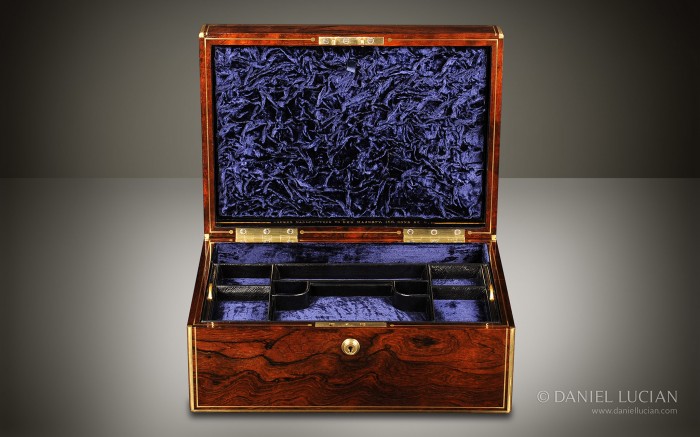
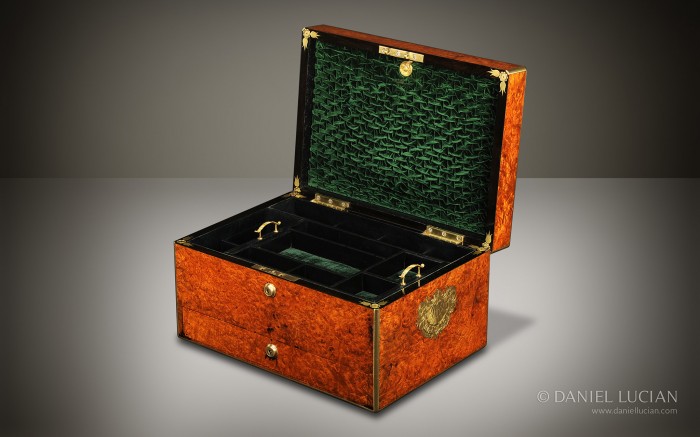
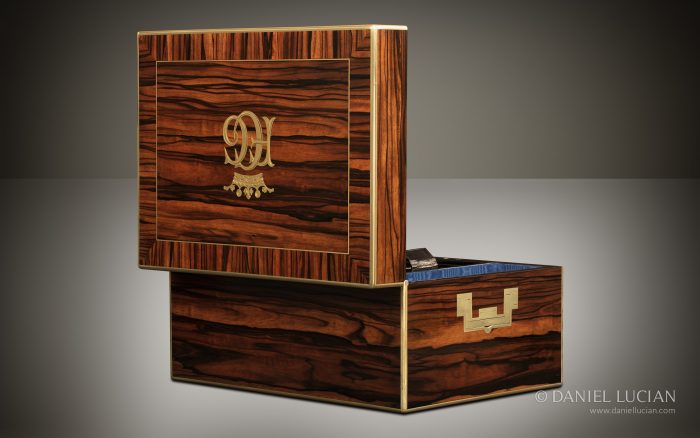
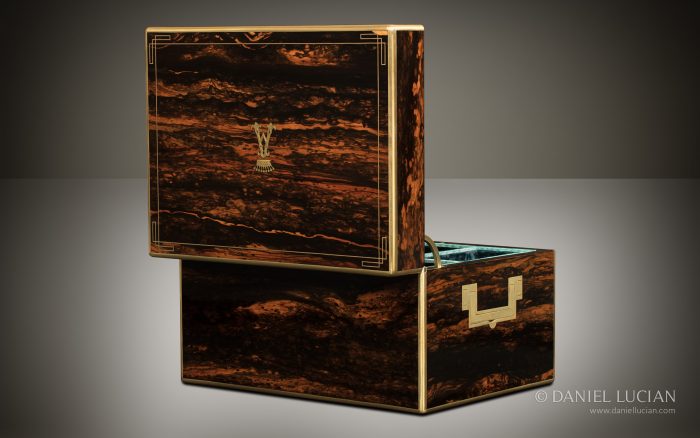
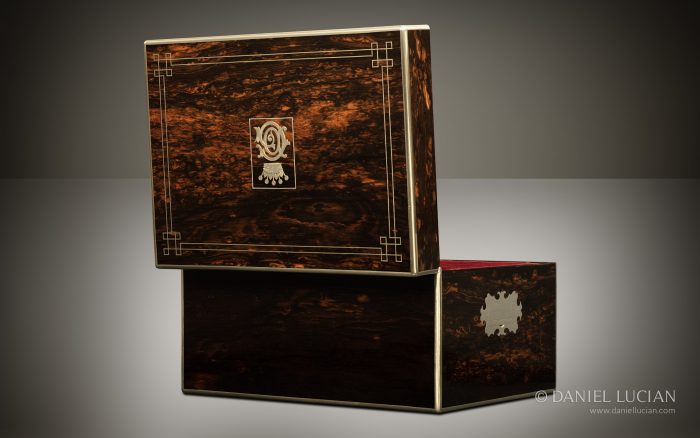
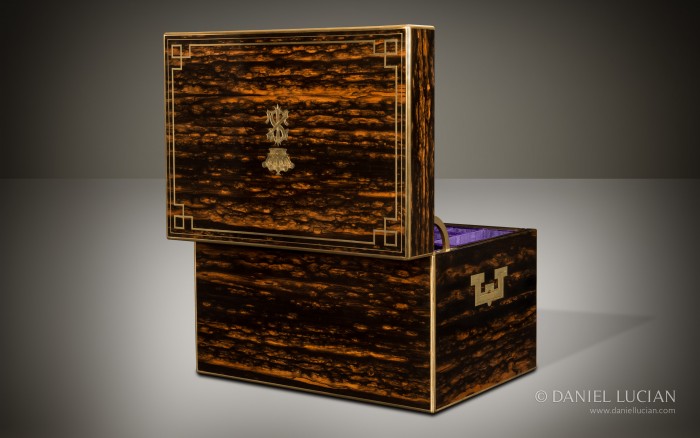
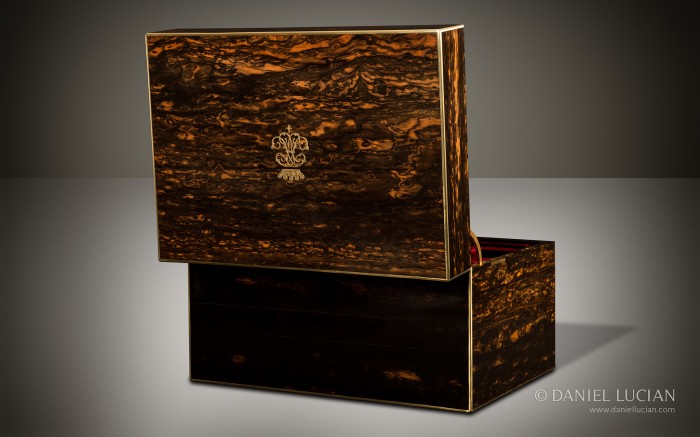
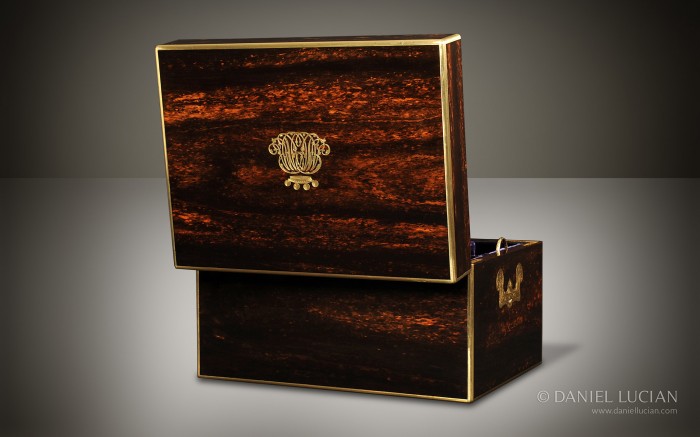
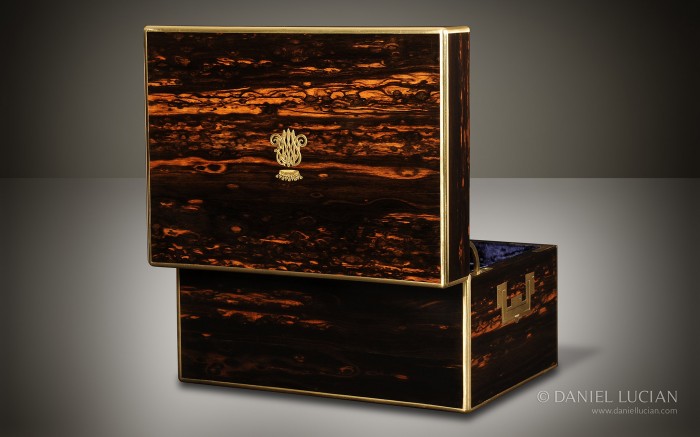
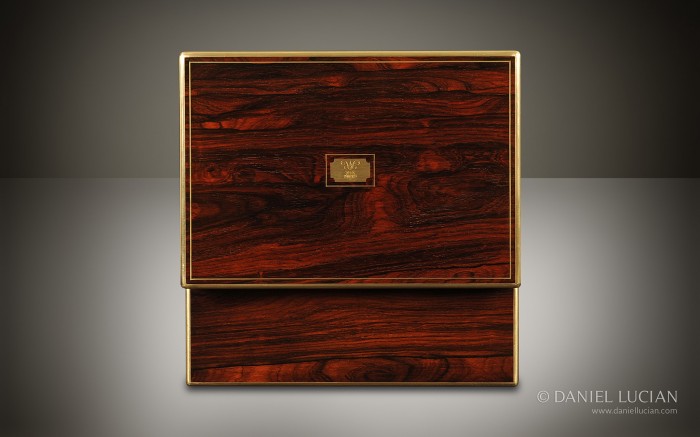
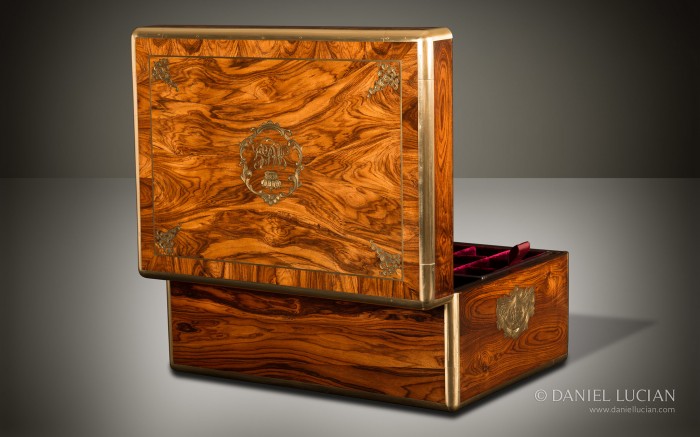
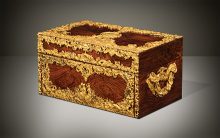 Price On Application
Price On Application